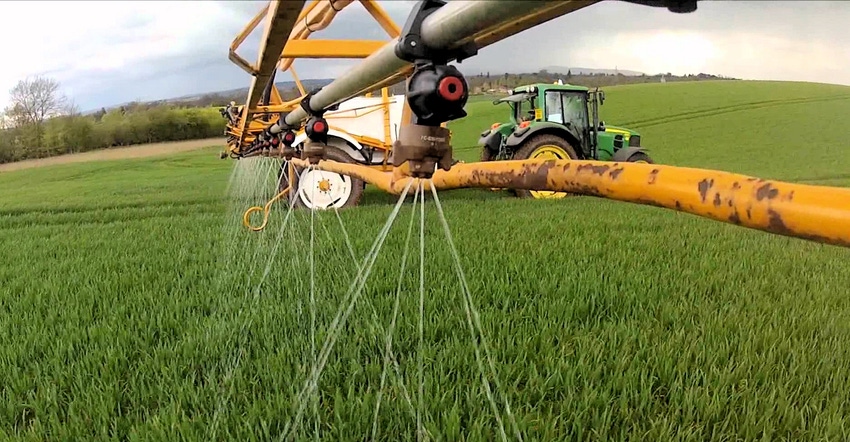March 29, 2018

Got winter forages, especially triticale, in your crop toolbox? Triticale’s high yields and forage quality are a real bright spot in the gloomy dairy economic situation. But managing fall and spring nitrogen, and sulfur, is critical, according to Tom Kilcer, certified crop advisor for Advanced Ag System in Kinderhook, N.Y.
To maximize fertilizer dollars, never apply nitrogen to snow-covered or even frozen ground. Losses can range from 26% to 44% when applied to cold or frozen surfaces — with a quick weather warm-up, he says.
Sure, it may be spring now. But this spring has already proven Mother Nature to be anything but predictable.
Seriously consider adding an anti-volatilization agent to urea, even when spring temperatures are low. This will inhibit the urease enzyme from splitting the urea into ammonia that could be lost. Cornell research suggests that treated urea losses can be 63% less than the untreated losses in the same field. Anti-volatilization agents can hold losses under 10%.
Sulfur a must
To get both yield and protein from your forage, crops need sulfur, Kilcer says. There’s no longer enough sulfur being deposited in rain to meet crop needs.
Nitrogen increases forage crude protein, but only to about 15% to 16%. But adding sulfur to the spring top-dressed solution N, increases forage crude protein to 20%. So, for a field that didn’t get manure last fall (a major on-farm sulfur source), adding sulfur is highly suggested. Liquid N’s nitrate form makes it available to the crop much more quickly.
A very effective ratio is roughly 1 pound of sulfur per 10 pounds of nitrogen. A mix of 1,500 pounds of urea (treated with an anti-volatilization agent) mixed with 500 pounds of ammonium sulfate will give you approximately 40-0-0-6S, he says. That’s perfect for all cool season grasses and winter forage grains such as triticale.
Nitrogen at $0.70 a pound would cost $84 an acre for the highest 120-pound nitrogen rate. If you produced only two tons of winter triticale dry matter, that $84 of fertilizer would replace $159 of crude protein from $440-a-ton soybean meal.
Do not top-dress winter forage crops with manure, cautions this crop consultant. “It can wreck silage.”
Consider sprayer stream bars
An increasing number of farms are using stream bars instead of flood nozzles to apply solution nitrogen with sulfur (ammonium thiosulfate), says Kilcer. Needham Ag is one stream bar source.
Stream bars allow for higher N application rates without burning the crop like a flood jet tends to do. Western New York Crop Management reports that stream bar flows are distorted enough only on windy days to cause any burning even at high N rates.
Source: Advanced Ag Systems
You May Also Like




